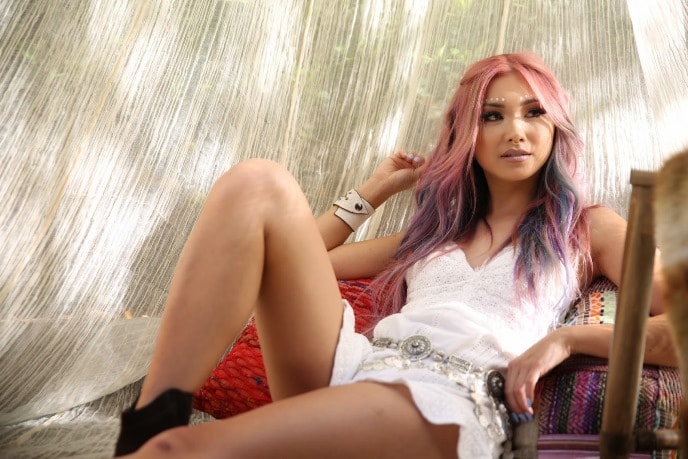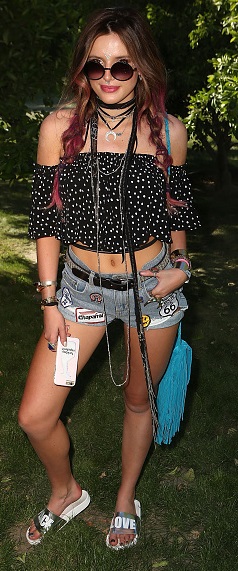You can shop at Amazon for bohemian fashion and much more.
In modern usage, the term "Bohemian" is applied to people who live unconventional, usually artistic, lives. The adherents of the "Bloomsbury Group", which formed around the Stephen sisters, Vanessa Bell and Virginia Woolf in the early 20th century, are among the best-known examples. The original "Bohemians" were travelers or refugees from central Europe (hence, the French bohémien, for "gypsy"). In 1848 William Makepeace Thackeray used the word bohemianism in his novel Vanity Fair. In 1862, the Westminster Review described a Bohemian as "simply an artist or littérateur who, consciously or unconsciously, secedes from conventionality in life and in art".
Reflecting on the fashion style of "boho-chic" in the early years of the 21st century, the Sunday Times thought it ironic that "fashionable girls wore ruffly floral skirts in the hope of looking bohemian, nomadic, spirited and non-bourgeois", whereas "gypsy girls themselves ... are sexy and delightful precisely because they do not give a hoot for fashion". By contrast, in the late 19th century and first half of the 20th, aspects of Bohemian fashion reflected the lifestyle itself. Boho-chic is a style of fashion drawing on various bohemian and hippie influences, which, at its height in early 2005, was associated particularly with actress Sienna Miller and model Kate Moss in England and (as "bobo" chic) actress and businesswoman Mary-Kate Olsen in the United States. It has been seen since the early 1990s and, although appearing to wane from time to time, has repeatedly re-surfaced in varying guises. Many elements of boho-chic became popular in the late 1960s and some date back much further, being associated, for example, with pre-Raphaelite women of the mid-to-late 19th century.
"Boho" is an abbreviation of bohemian. Vanessa Nicholson (granddaughter of Vanessa Bell, one of the pivotal figures of the unconventional, but influential "Bloomsbury Group" in the first half of the 20th century) has described it as a "curious slippery adjective". Although the original Bohemians were travellers or refugees from central Europe (the French bohémien translates as "Gypsy or Roma people"),
"Chic" was borrowed from French in the late 19th century and has come to mean stylish or elegant.
Among female Bohemians in the early 20th century, the "gypsy look" was a recurring theme.
By the mid-1980s, the American singer Madonna had turned the bra into a positive, even provocative, fashion statement. Madonna's flamboyant and gritty style (notably seen to bohemian effect alongside Rosanna Arquette in the 1985 film, Desperately Seeking Susan) was, in turn, a precursor of so-called "girl power" that was associated in the 1990s with various prominent young women (such as singers Courtney Love, who played the 1999 Glastonbury Festival in a headline-grabbing pink bra, and the more commercially oriented Spice Girls) and offbeat or quirky American television series (Xena: Warrior Princess, Buffy the Vampire Slayer, Caroline in the City, Sex and the City).
In the mid-to-late 1980s, variants of the short and fundamentally un-Bohemian rah-rah skirt (which originated with cheerleaders) were combined with leather or demin to create a look with some Bohemian or even gothic features.
In the 1990s the term, "hippie chic", was applied to Tom Ford’s collections for the Italian house of Gucci.
In the early 21st century, "boho-chic" was associated initially with supermodel Kate Moss and then, as a highly popular style in 2004-5, with actress Sienna Miller. In America similar styles were sometimes referred to as "bobo-" or "ashcan chic", or "luxe grunge".
View bohemian fashion blog posts here on Apparel Search.
Do you have an opinion or historical reference regarding bohemian style as it relates to clothing? You are welcome to share your thoughts with us.
See examples of bohemian fashion on our fashion blog.
Thank you for using the Apparel Search website.

